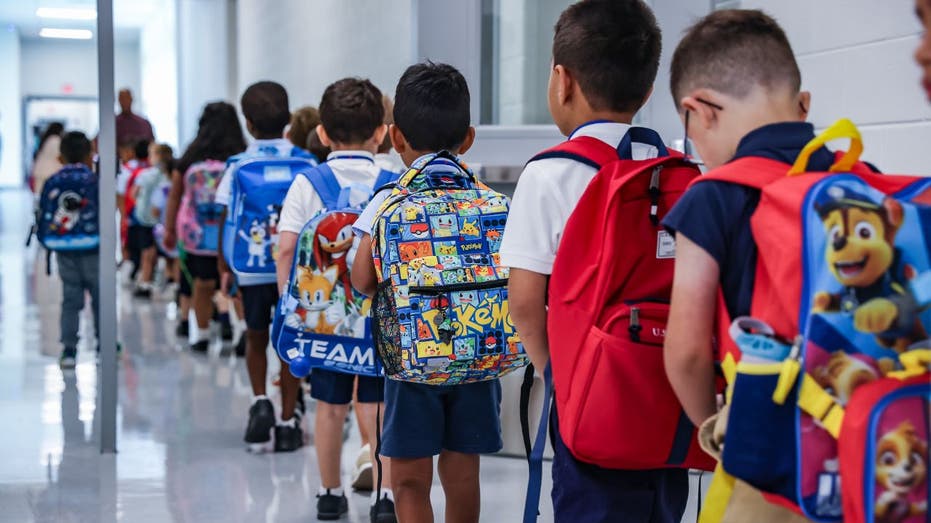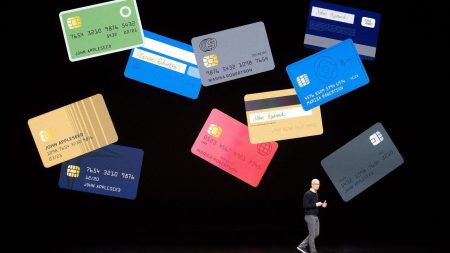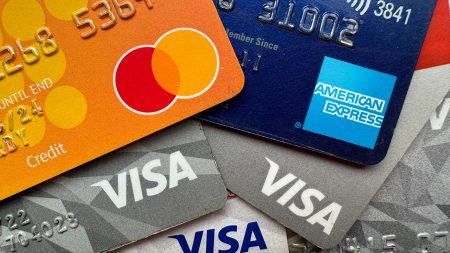With summer wrapping up shortly, parents are outfitting their children for the new school year.
But American households are struggling to afford back-to-school items such as backpacks, clothing, school supplies and books.
This struggle is leading millions of parents to carry debt to make sure their children have what they need for school.
FINANCIAL PRESSURES ARE IMPACTING BACK TO SCHOOL SHOPPING
Nearly one-third (31%) of U.S. adults doing back-to-school shopping this year will go into debt to pay for it or already have, according to Bankrate’s newest Back to School Survey.
Also, this type of spending is up from 29% in 2022.
“Honestly, the true toll is probably even higher,” Ted Rossman, Bankrate’s senior industry analyst in Pleasantville, New York, told FOX Business.
He said half of credit cardholders already have credit card debt, which is the highest percentage in 4.5 years, and that 6 in 10 credit card debtors have been in debt at least a year.
“Credit card debt is easy to get into and hard to get out of,” Rossman said.
BACK-TO-SCHOOL SHOPPING TO COST AMERICANS MORE THAN EVER AMID INFLATION SPIKE
“A collection of common household expenses costs about 20% more now than it did three years ago. Back-to-school is just one more big expense on top of higher prices on just about everything.”
What’s the cost of school-supply readiness?
Back-to-school costs, on average, for kids in kindergarten through 12th grade run about $875, according to The National Retail Federation.
For the average college student, it’s about $1,365.

“These numbers include electronics, clothes, shoes, backpacks and other accessories along with classic school supplies,” Rossman said.
“It’s not all pencils and notebook paper, but it speaks to that cumulative toll and the high cost of parenting.”
How can you ease back-to-school spending?
Most parents shop the sales or seek coupons as they buy school supplies, but there are more strategies to consider for cutting spending this year.
ADULTS WITH LEMONADE STANDS NOW SQUEEZING MONEY OUT OF BUSINESS MODEL USUALLY USED TO TEACH CHILDREN SKILLS
Here are a few tips.
Take stock of what you already have. If you have leftover school supplies from last year and clothes, shoes and backpacks that still fit, there’s no need to buy new ones, advised Rossman.
It may prove helpful to stagger your spending as your children return to the classroom.
Confirm what is really needed on day one. It may prove helpful to stagger your spending as your children return to the classroom, say experts.
SAVE MORE MONEY: 10 CLEVER WAYS TO CUT SPENDING ON UNNECESSARY ITEMS
Ask a child’s teacher what each student really needs on day one versus what can wait.
“Holding off lets you spread out your cash flow and take advantage of lower and non-peak prices,” said Rossman.

Make more practical buying decisions. Parents who think their kids must have all the bells and whistles, a designer backpack or other cool items they can’t easily afford may go further into debt trying to be trendy.
“The pressure for parents and children to have the latest, most fashionable school gear is brutal, and nothing is wrong with wanting to make children happy, but not at any cost,” said Mariana Martinez, a senior family dynamics consultant with Wells Fargo’s wealth and investment management group based in Bethesda, Maryland.
“Nothing is wrong with wanting to make children happy, but not at any cost.”
“There is a better gift you can give your children than the excitement of the moment. That is to experience firsthand the difference between a need and a want and the empowerment of making a decision accordingly.”
BACK-TO-SCHOOL SCAMS AND FRAUDSTERS TO BEWARE: WHAT FAMILIES MUST KNOW
When a parent finds solutions other than incurring debt to make a purchase, children will learn a critical lesson that will help them lead financially stable lives.
What if you must use credit cards for school items?
With tight household budgets, using credit cards has become a reality for most Americans.
Here are some expert tips on how to use credit cards responsibly.
Get the lowest interest rate possible. If you have credit card debt, Rossman advised people to opt for a card with a generous 0% balance transfer term.

Forget about rewards when you’re in debt. It doesn’t make sense to pay 20%, 25% or 30% APR just to get a couple percentage points back in rewards, said Rossman.
Continue to make long-term planning a priority. Paying down credit card debt remains on the minds of Americans.
To that point, Fidelity’s 2024 College Savings Indicator revealed that 34% of parents rank saving to pay off credit card debt among their top savings priorities, shortly behind saving for college, retirement and emergencies.
For more Lifestyle articles, visit www.foxbusiness.com/lifestyle
“While parents prioritize their children’s college education, the reality is that balancing day-to-day expenses with long-term savings can be daunting,” Tony Durkan, vice president and head of 529 relationship management at Fidelity Investments in Boston, told FOX Business.
“Fidelity encourages parents to save what they can, when they can, with tools such as a 529 plan that offer the flexibility and tax advantages to enhance a family’s ability to save,” he said.
Read the full article here









